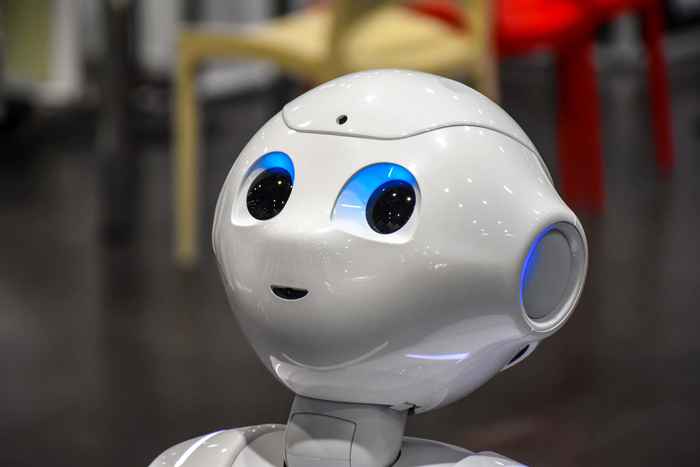Social robot improves math education in playful and personalized way
10 May 2023
UvA-professor of ‘Human-System Interaction for Health and Wellbeing’ Somaya Ben Allouch and seven colleagues have won the second prize in the Best Studies Paper Award at the International Conference on Human-Robot Interaction this March. The paper was part of the research project SOROCOVA: ‘Social Robotics to Support COVID-19 Learning Delays’. Aim of the project is to reduce math deficits in primary schools by utilizing a social robot as an additional math tutor. Ben Allouch is affiliated both with Hogeschool van Amsterdam, as lector of Digital Life, and the The Digital Interactions Lab (DIL) of the Informatics Institute of the UvA.

Social robots
Social robots that can talk with humans have been a promise for several decades. But reality is unruly: robots are quite expensive, cost time to prepare, operate and maintain, robots break, and robots are not yet as flexible, improvisational and multifunctional as humans are. Therefore, despite many laboratory experiments, numerous prototypes, and some commercial products, social robots have yet to live up to their promise. But that doesn’t mean that scientists and engineers should give up.
One of the great challenges is long-term engagement. In the beginning, everyone finds a social robot like NAO or Pepper fun and amusing, but the fun often goes away quickly because the robot reacted very predictably until now. The challenge of long-term engagement was taken up by Somaya Ben Allouch and her colleagues in their SOROCOVA project.
Ben Allouch: ‘Together with children, teachers, and math education experts we designed a new math module for a NAO-robot. We then evaluated the interaction between the robot and 130 children in the age of eight to eleven from six different elementary schools. The number of children that we studied is larger than many studies and the duration of the experiment is also longer than in previous studies.’

The researchers examined the effects of personalization and guidance provided by the robot. They made a comparison between a group that did receive guidance from the robot during the math session and a group that did not. Regarding personalization, the robot could or could not remember a child's name and whether or not a child gave a handshake. Ben Allouch: ‘If a child gives the robot a hand or a punch when they first meet, the robot remembers and does it on its own next time. The robot also chats a bit about personal things.’
The math module included a number of new elements. For example, the robot tailors the math dialogue to the children’s interests. Ben Allouch: ‘One child likes tennis, another likes dancing or rabbits. The robot then places the math task in the context of that interest. This helps keep the interaction interesting even in the long run.’
The SOROCOVA study found that more strongly intertwining the robot’s social behaviors with the math task leads to more effective and enjoyable learning. And children got better at math over time when the robot provided guidance. Ben Allouch: ‘It is likely that not the educational content of the guidance, but rather the social support it offers explains the performance increase. Furthermore we found that the children who need math support the most also benefited the most. With the robot as math tutor, they made less mistakes, they were faster and they also liked math more than when the robot was not used.’
I do believe that social robots can support education and health care, but only if we take seriously the needs and wishes of both the professionals who have to deploy the robots and the target group of people having to interact with them.Somaya Ben Allouch
Elderly care
In addition to researching the social robot as a math tutor for children, Ben Allouch is also investigating the potential for using social robots in elderly care, for example for doing rehabilitation exercises and maintaining calm in elderly with dementia. A common challenge for deploying social robots both for children and for elderly, is understanding well what the target audience wants.
‘I think that this is the most important and most underestimated element in social robot research’, says Ben Allouch. ‘Instead of talking to a human, why would someone want to talk to a robot? We often talk about multi-disciplinarity in scientific research. But then you have different people looking at the same problem from different perspectives. But for solutions to work in practice you need trans-disciplinarity: you have to learn to speak each other’s language very well, so that you really understand the others. I do believe that social robots can support education and health care, but only if we take seriously the needs and wishes of both the professionals who have to deploy the robots and the target group of people having to interact with them.’
More information
Social Robotics to Support COVID-19 Learning Delays (SOROCOVA)
Social robots to support teachers in math eduction
Social robots in elderly care